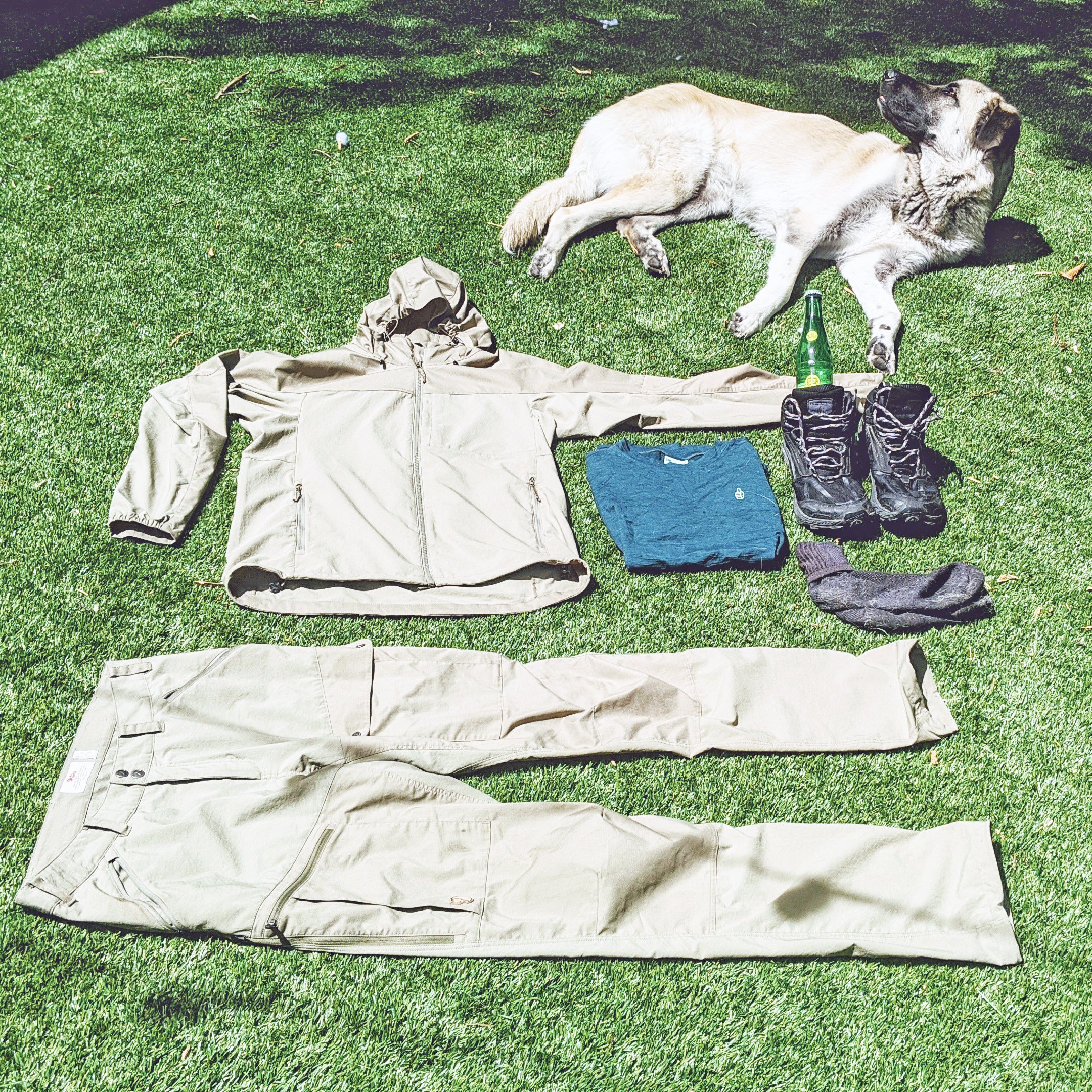Summer brings its ownÌýunique challenges for your wardrobe. It’s hot out, so clothing needs to be as light and breathable as possible. ButÌýthatÌýcan meanÌýsacrificing protection and durability. In most places, summer also means thunderstorms, so in addition to getting rid of your sweat, the clothing you wear this season needs to shed precipitation.Ìý
Is there such a thing as a single outfit that’s breathable, durable, quick drying, and water-resistant? I think I’ve found one that fits the bill.ÌýAnd all of the pieces here areÌýavailable for both men and women.Ìý

Pants and Jacket
Outdoors, you want to wear full-length pants rather than shortsÌýto protect your legs from the sun, bugs, and brush. The obvious compromise is that pants don’t breathe as well as shorts. And in theÌýpast, fabrics that were capable of standing up to activewear outdoors made thisÌýproblem worse.Ìý
FjällrävenÌýset out to address thisÌýissue with its new G-1000 Air Stretch fabric, whichÌýcombines the strength of long cotton fibers with the abrasion and water resistance of polyester, all while providing a degree of movement that’s alien to both fabrics. It’s also exceptionally thinÌýand breathes like linen. Air Stretch resembles ripstop canvasÌýand is used across the seat and front ofÌýFjällräven’s new Midsummer pants ($145)Ìýand for the hood, shoulders, and outer sleeves of itsÌýMidsummer jacket ($200).Ìý
The brand employs poly-cotton blends in thicker versions of G-1000, too, but in those applications, waxes on the fabricÌýadd water resistance. , cotton fibers are hollowÌýand posses a slight negative charge; this means they attract, absorb, and hold on to positively charged water molecules to a degree that’s incredibly problematic outdoors.ÌýAir Stretch, however, which is the lightest fabric in the G-1000 range, is not waxed. And while it can be made more water-resistant by applying wax, doing so risks compromising the breathability of the fabric, therebyÌýreducingÌýits suitability for hot summer conditions.Ìý
If you run items from Fjällräven’s new Midsummer rangeÌýunder a tap, Air Stretch will ultimately soak up waterÌýand stay damp for about half an hour, even if it’s exposed to direct sunlight. The even lighterÌýrecycled polyester-stretch material that composes the body of the jacket and trousers performs similarly.Ìý
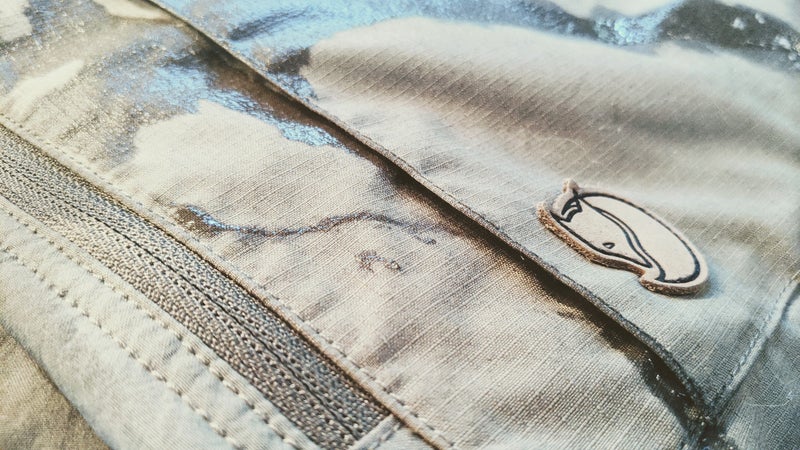
I’m explaining all of this so there’s no misconception about the role that items in the Midsummer range are intended for:Ìýthey’re durable pieces of clothing that remain exceptionally comfortable in hot weather. They are not suitable asÌýouterwear in cold, wet weather. But it’s that trade-off that makes them so perfect for hot conditions.
I spend a lot of time hiking off-trailÌýthrough dense pine forestsÌýand thick sagebrush, both of which can wreak havocÌýon minimal-weight trousersÌýand exposed skin. But after several weeks of wear, the Midsummer trousers demonstrated no signs of damage whatsoever. And while they do retainÌýwater if I submergeÌýthem, theyÌýshed light rain and moisture from wet plants just fine. They’ve proven totally comfortable on hotÌýafternoon hikes, at leastÌýin the high eightiesÌýwe’ve had so farÌýhere in Montana.ÌýFor even hotter temperatures, FjällrävenÌýincludes generous ventilation zips above the knees—the perfect location forÌýmaintainingÌýthe protection of true pants across the lower legs, while adding the ventilation of a pair of shorts across your thighs.Ìý
For the same reasons that long trousers are a better option in the outdoors than a pair of shorts, carrying a light jacket is a good idea even at the height of summer. The Midsummer jacket is made from the same materials as the pants.ÌýItsÌýresistance to wind and mildÌýprecipitation isÌýall you’ll need for early-morning starts or aÌýlate-evening chill, while remaining cool enough to donÌýover a merino T-shirt into the mid-seventies.Ìý
Another thing proper pantsÌýand a jacket are good for is keeping mosquitoes and ticks off your body. While very determined skeeters are capable of biting through G-1000 Air Stretch, that’s easily remedied with . The trousers also include drawcords at their ankles. Cinch those down over a tall sock, and ticks will be unable to get in.Ìý
On the subject of adaptability, IÌýappliedÌý to both the Midsummer jacket and pants a few days ago. It adds an additional level of water resistanceÌýwithout sacrificing breathability, and it’sÌýas easy to apply as running your clothes through the wash. Which brings me to the final benefit of G-1000 Air Stretch: because it’s not waxed, you can just popÌýthese pants and jacket in a washing machine without risking a reduction inÌýtheir performance.Ìý
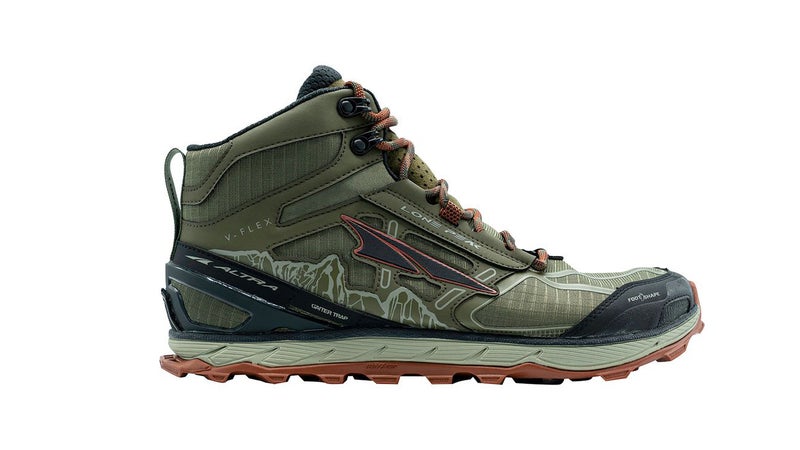
Shoes
Our columnistÌýAndrew Skurka detailed the benefits of wearing lightweight trail runners the other day. I only disagreeÌýwith him on one point: ankle protection. I like to wear Altra’s Ìý($130), anÌýankle-high version of the brand’s popular trail runners.
I’ve detailed the same shoeÌýin its waterproof form, but in the summer, I prefer the mesh ones, which foregoÌýa waterproof membrane, making themÌýexceptionally breathableÌýand quick to dry. These things are so comfortable, you’ll forget you’ll wearing them. Going for the boot-like midÌýrather than the low-cut shoeÌýmeans dealing withÌýa tight-fitting upper that makes the Lone PeakÌýhard to put on or take off, but that piece also adds a little insurance for your ankles on uneven groundÌýand from brush, rocks, or anything else that might cause injury while walking aroundÌýor duringÌýa fall. SuchÌýprotection comes at a weight penalty of only two ounces per pair—totally worth it if you tend to leaveÌýwell-trammeled trails behind.Ìý
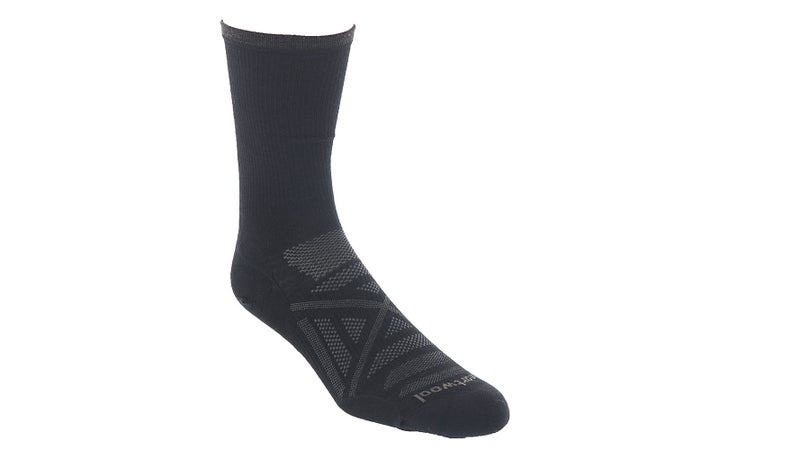
Socks
The theory of wearing nonwaterproof shoes outdoors is that, due to their proximity to the groundÌýand their position at the bottom of your legs,Ìýyour feet are going to get wet no matter what. This may happenÌýwhile crossing a stream—and fording is always safer than jumping—or as rain runs down your pant legs. If your feet get wet inside a waterproof shoe, they’ll stay wet. If they get wet inside a breathable shoe, the heat you generate as you move, plus the mechanical action created by the movement of your foot, will rapidly push the water out of your shoes. SoÌýyour feet end up drierÌýmore often if you forego the waterproof membrane. (You should still wear a waterproof boot in winter conditions, however, andÌýthe taller the better.)
None of the above is possible if you wear a sock that retains water. AndÌýin the summer, you want that sock to be as breathable as possible. In very hot, very wet conditions, such as those experienced in a boat, a synthetic sock may be the best option since polyester and nylon fibers do not absorb water. ButÌýin the variable conditions you’ll find on land, I think merino wool is the best option.Ìý
You can read more about the technical properties of wool in this rant I wrote about flannel. The only thing that makes merino different from other types of wool is that it’s softerÌýand more comfortableÌýnext to your skin as a result. It retains the same warm-when-wet, cool-when-hot properties as other wool fibers. And all that makes it a perfect material for socks. This time of year, you’re going to want the lightest, most ventilated merino socks possible. And the best I’ve found are these Ìý($20). Opt for a taller oneÌýrather than theÌýno-show kind to help keep ticks off. You can and should spray socks with permethrin for that same reason, too.Ìý
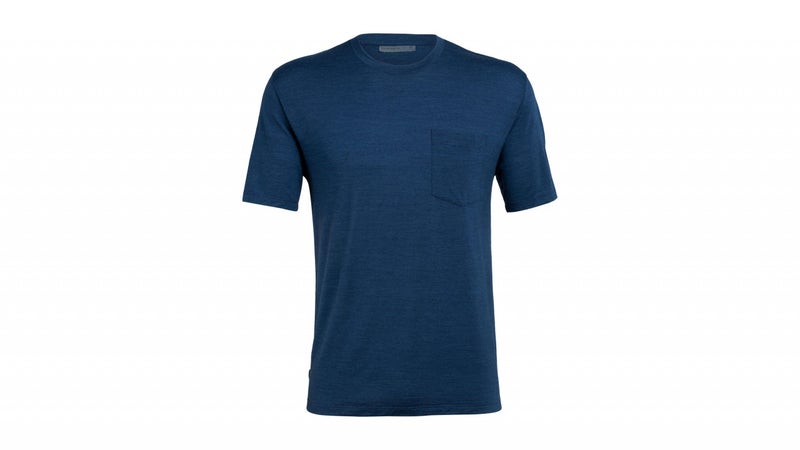
Shirt
Everything that makes merino comfortable on your feet will make it comfortable on your upper body.ÌýThe lightestÌýoptions you can typically find are in the 125-to-130-weight range.Ìý
Fabric weights are determined by how much a square meter of a given fabric weighsÌýand are typically expressed in grams per square meter. The lighter weight a fabric is, the thinnerÌýand airier it’ll be. If you want to benefit from merino wool’sÌýnaturally temperature-regulating propertiesÌýand next-to-skin comfort in hot summer weather, you want the lightest shirt you can find.Ìý.Ìý
The trouble is, merino is pricey stuff to begin with, and spinning it into a very light fabric requires specialÌýtooling and processes. SoÌýlightweight merino T-shirts tend to cost you. Our example Icebreaker shirt isÌý$110.Ìý
Luckily, you can protect your investment. The tricks to making ultralight merino clothing last includeÌýwashing it infrequently, and doingÌýso in cold waterÌýon your machine’s gentle cycle, then hanging it up to air-dry. Putting merino-wool garments into your dryer will eventually result in holes developing in them. Cared for properly, that $110 T-shirt should easily withstand a couple years’ worth of very regular wear.Ìý


